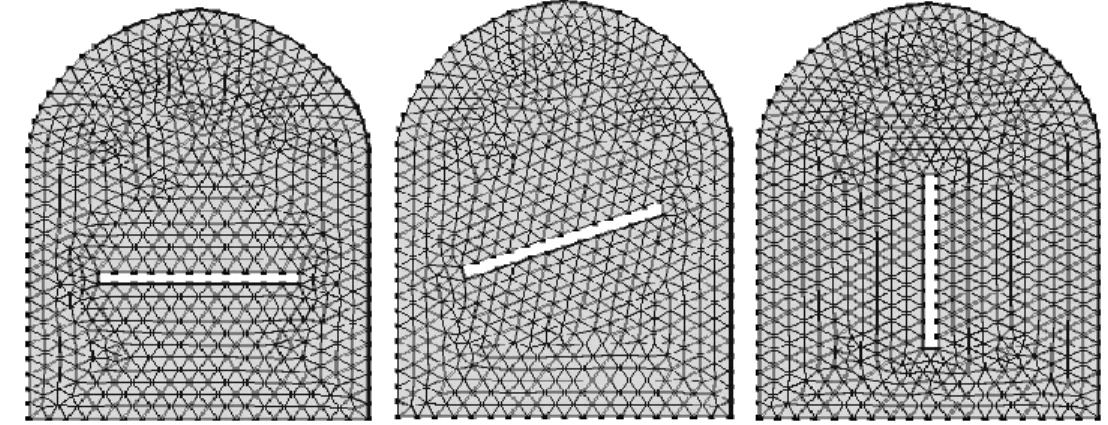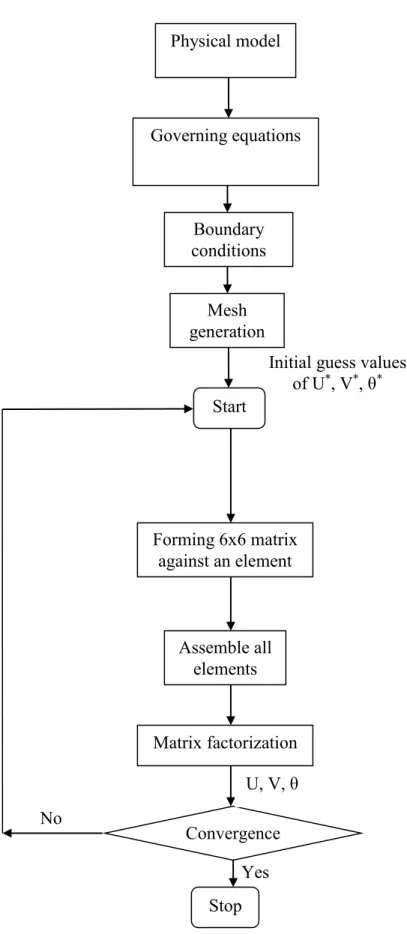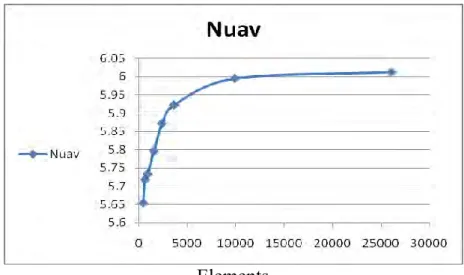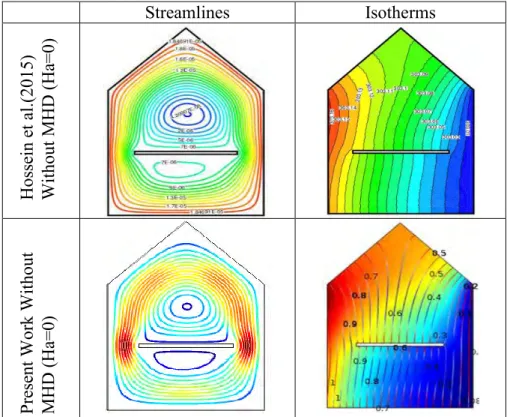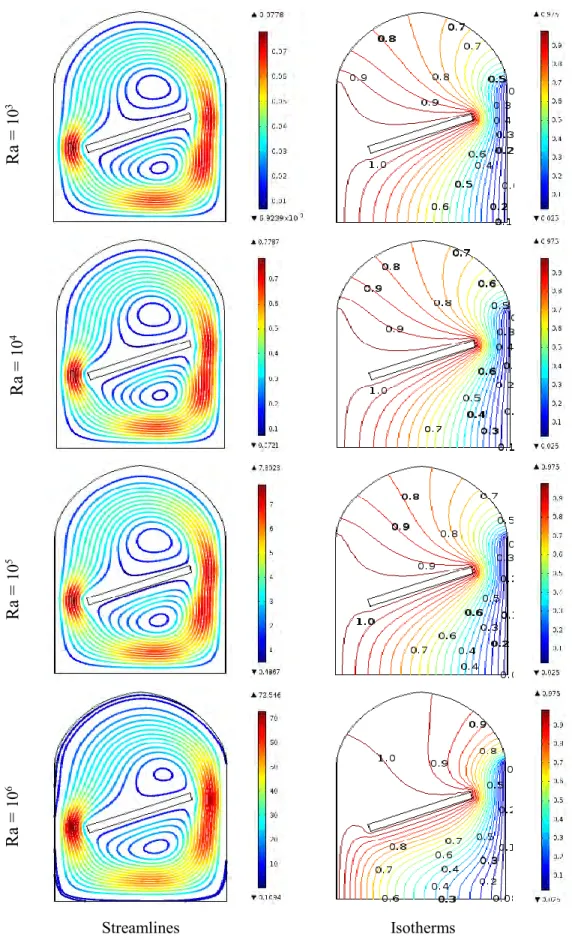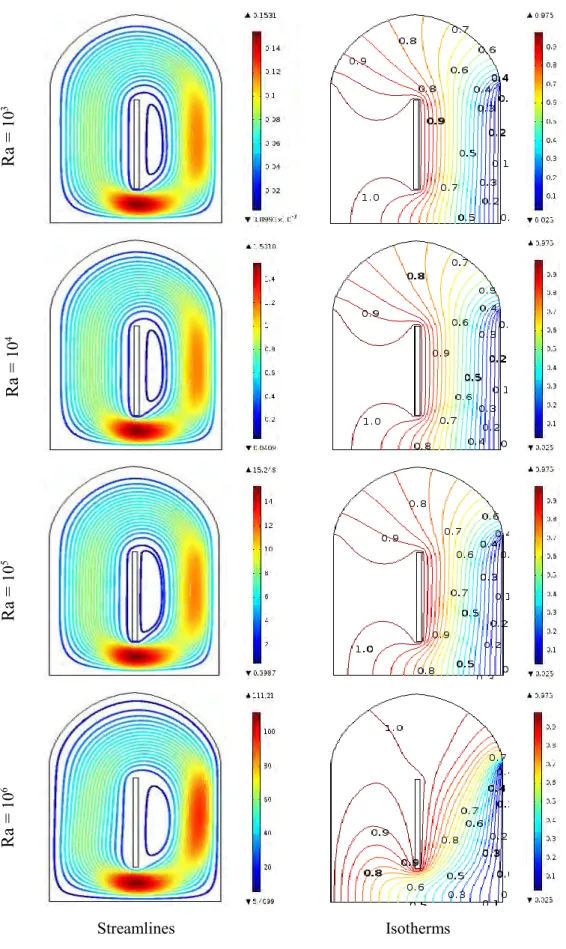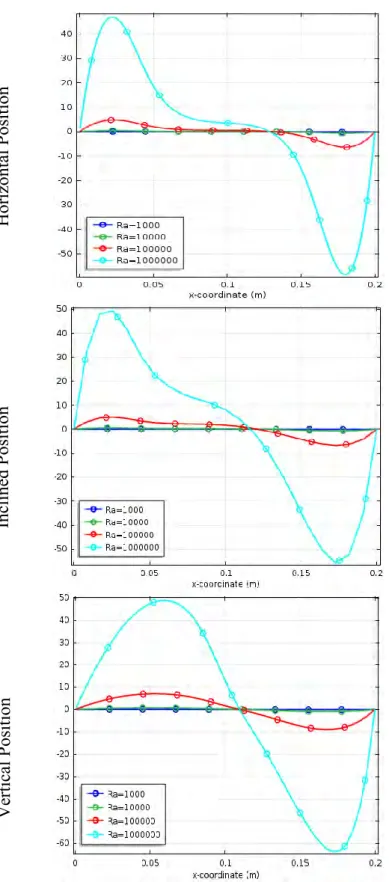I would like to thank all the staff of the Department of Mathematics, Bangladesh University of Engineering and Technology, for their cooperation in this work. The computational results also indicate that the average Nusselt number at the heated left vertical wall of the cavity depends on the dimensionless parameters.
Introduction
Heat flux, which is defined as the amount of heat transfer per unit area per unit time, can be calculated from the physical laws related to temperature gradient and heat flow. The term natural could be used to describe a framework or system of fundamental and universal importance in this system are heat transfer mechanisms.
Flow within an enclosure
The study of the universe led to the realization that all physical phenomena are subject to natural laws. It estimates the rate at which heat is transferred across the system boundaries, subject to specific temperature differences and the temperature distribution of the system during the process.
Regular and Irregular Shapes
- Applications of an Regular Rectangular Enclosure
In fact, if you try combinations of these, you can take any corner of the rectangle to any other corner. This has quarter and half turns, mirrors through the corners as well as the vertical and horizontal mirrors of the rectangle.
Heat Transfer Mechanism
- Convection
- Free or Natural Convection
- Conduction
- Stream function
- Thermal conductivity
- Thermal Diffusivity
- Internal and External Flows
- Boundary Layer
The thermal conductivity of a material can be defined as the rate of heat transfer through a unit thickness of the material per unit area per unit temperature change. Therefore, the thermal conductivity of a material is a measure of the material's ability to conduct heat.
Magneto-Hydrodynamics
- Applications of MHD
- Fluid Mechanics Aspect
- Boussinesq Approximation
This difficulty in reconnecting magnetic field lines makes it possible to store energy by moving the fluid or source of the magnetic field. The liquid core of Earth and other planets is theorized to be a huge MHD dynamo that generates Earth's magnetic field.
Dimensionless Parameters
- Rayleigh Number, Ra
- Grashof number, Gr
- Prandtl Number, Pr
- Hartmann Number, Ha
- Nusselt Number, Nu
Implicit in this is the assumption of local quasi-equilibrium, which allows the state of the fluid at any point to be described by several variables, related as if the fluid were in equilibrium. The Hartmann number is the ratio of the electromagnetic force to the viscous force first introduced by Hartmann.
Literature Review
Natural convection heat transfer in a square cavity with a heated plate built in vertically and horizontally was investigated by Oztop and Dagtekin (2004). Basak and Roy (2005) investigated the natural convection flow in a square cavity with non-uniformly heated walls. Magneto hydrodynamic natural convection in an enclosure with partially active vertical walls was studied by Kandaswamy et al.
Natural convection in a square cavity, localized heating from below, was investigated by Santosh et al. 2015) performed natural convection in a porous triangular casing with a circular obstacle in the presence of heat generation. Natural convection in a triangular top wall enclosure with a solid strip was studied by Hussein et al.
Inspiration behind the Selection of Current Work
They observed that the rate of heat transfer increases with increasing Raleigh number for uniform heating of the bottom wall. 2013) numerically investigated that natural convection in a rectangular cavity having internal energy sources and electrically conductive fluid with sinusoidal temperature at the bottom wall. 2016) analyzed the effects of magnetic field on distributed heat sources in a nanofluid-filled enclosure by means of natural convection. 2017) investigated the numerical simulation of natural convection in a rectangular cavity with triangles of different orientations in the presence of a magnetic field. The literature review noted that no work has yet been done on MHD natural convection flow inside the upper semi-circular enclosure with a solid bar.
Magneto-hydrodynamic natural convection in square cavities has received more attention for its application in several thermal engineering problems, for example in the design of electronic devices, solar heat receivers, geothermal reservoirs, etc. Due to these and many other applications, it is felt. necessary to carry out intensive research in MHD natural convection flow. From the historical review, it is clear that during the last two decades, numerous experiments and numerical calculations have been presented to describe the phenomenon of MHD natural convection in cavities.
Main Objectives of the Present Study
The magnetohydrodynamic principles are used in the case of electromagnetic pumps, heat exchangers and space vehicle propulsion. The important applications of MHD are the MHD generator using ionized gas as armature, electronic pumping of liquid metal coolants in nuclear reactors, stirring and levitation in metallurgical industry. These investigations are aimed at studying the effect on flow and heat transfer for different Rayleigh numbers, Prandtl numbers, aspect ratios etc.
Therefore, numerical studies are essential to observe the change in fluid flow and heat transfer due to the above physical changes with different boundary conditions, which form the basis of inspiration behind the selection of the present work. To examine the velocity profile, temperature profile and isothermal contours, streamlines and Nusselt number by varying the position of the solid hot bar in the cavity. To investigate the effect of governing parameters, namely Rayleigh number (Ra) and Hartman number (Ha) on the flow and thermal field in the cavity.
Outline of the Thesis
- Computational Technique
- Merits and Demerits of Numerical Method
- Elements of Numerical Solution Methods
- Mathematical Model
- Discretization Process
- Numerical Grid
- Finite Approximations
- Solution Technique
- Discretization Approaches
- Finite Element Method
- Mesh Generation
- Finite Element Formulation and Computational Technique
- Algorithm
- Solution of System of Equations
- Chapter Summary
Despite these ideal characteristics, the finite element method dominates most computational fluid dynamics. The presented methods have a common feature: they generate equations for the values of unknown functions at a finite number of points in the computational domain. For the finite element method, there are no restrictions on the connection of elements as long as the sides (or faces) of the elements are properly aligned and have the same nodes for adjacent elements.
Another advantage of the finite element method is that of the specific mode of deriving the equations for each element which is then assembled. The basic idea of the finite element method is to see a given domain as a composition of simple geometric shapes, called finite elements, for which it is possible to systematically generate the approximation functions needed in the solution. Development of the finite element model of the problem using its weighted integral or weak form.
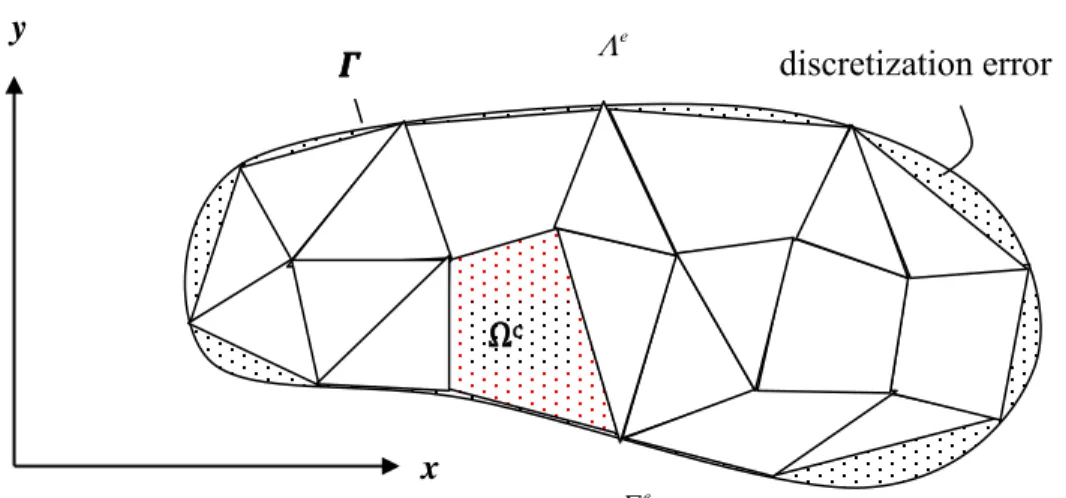
- Mathematical Modeling
- Physical Model
- Mathematical Formulation
- Governing Equation
- Boundary Conditions
- Non-Dimensional Variables
- Non-Dimensional Governing Equations
- Non-Dimensional Boundary condition
- Numerical Analysis
- Finite Element Formulation
The geometry of the upper semicircular enclosure with boundary conditions considered in the present problem is shown in Fig. The length of the cavity perpendicular to its plane is assumed to be sufficient; therefore, the problem is considered two-dimensional. Some steps of the mathematical formulation for the above physical configurations are shown below.
The average Nusselt number at the heated left vertical wall and solid strip, the cooled right vertical wall, and the thermal insulation bottom and semicircular top wall of the enclosure, based on the non-dimensional variables, can be expressed as. The six-node triangular element is used in this work for the development of finite element equations. To solve the sets of the global nonlinear algebraic equations in the form of a matrix, the Newton-Raphson iteration technique has been adapted through a PDE solver with MATLAB interface.
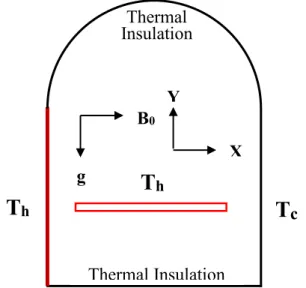
Grid Independence Test
Code Validation
In such cases, the exact meaning of the term can only be clear from context. Therefore, the thermal diffusivity of a material can be considered as the ratio of the heat conducted by the material to the heat stored per unit volume. When a fluid flows over a body, the velocity and temperature distribution in the immediate vicinity of the surface is strongly influenced by the convective heat transfer.
The only effect of the electromagnetic field is a coupling through the electromagnetic body force in the equation of motion. For vertical plates, the critical value of the Grashof number is observed to be about 109. The relative thickness of the velocity and the thermal boundary layers is best described by the dimensionless parameter Prandtl number, defined as.
Numerical analysis of the flow and heat transfer characteristics for MHD free convection in an enclosure with a heated barrier was investigated by Parvin and Nasrin (2011). They used Galerkin weighted residual finite element method and found that heat transfer decreases with increasing inclination angle of the inclined walls. They observed that the fluid flow and temperature field depend strongly on the presence of the circular body that obstructs the flow and temperature fields.
Then, the numerical solutions of the variables are obtained while meeting the convergent criterion.
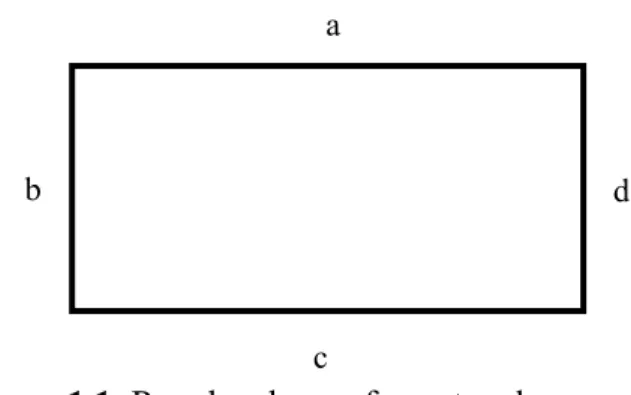
Comparisons of between without and with MHD
Results and Discussion
- Effect of Rayleigh number
- Effect of Hartmann number
The curves (in the left column) and isotherms (in the right column) for the vertical position and Ha = 100 (with magnetic field) are presented in Figure 4.11. Changes of the velocity component along the horizontal line Y=0.07 of the case with Rayleigh number and for Ha = 100 are shown in Figure 5.12. As can be seen in Figure 4.7 (for the horizontal position), the temperature value decreases due to the increase in the Rayleigh number.
The local Nusselt number along the horizontal line Y=0.07 of the space with the Rayleigh number and for Ha = 100 is shown in Figure 4.14 (for horizontal, inclined and vertical position). Figure 4.17 shows that only one vortex formed on the right side of the strip for all values of Ha. In Figure 4.21 (for horizontal position), it can be seen in the left column that two vortices are formed on either side of the strip.
Figure 4.22 (for inclined position) shows that two vortices are also formed on both sides of the tape. From Figure 4.18 (horizontal position) it can be seen that the absolute value of the maximum and minimum velocity decreases with increasing Hartmann number.
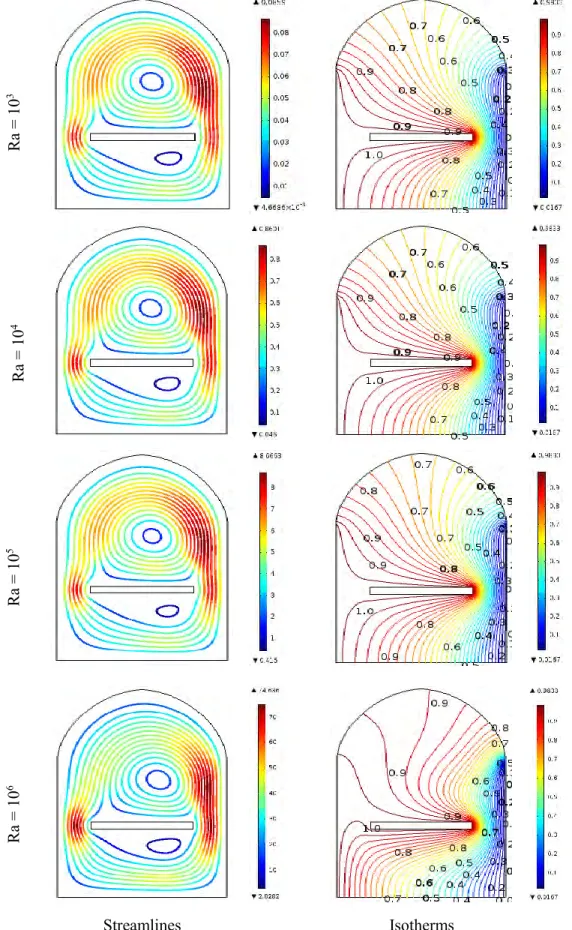
Summary of the Major Outcome
As the Hartmann number increases, both the flow rate and heat transfer within the casing decrease. The heat transfer rate is maximum for Ha = 0 and higher values of the Rayleigh number with vertical position of the solid strip.
Further works
A., “Numerical simulation of natural convection in a rectangular cavity with triangles of different orientation in the presence of magnetic field,” AIP Conference Proceedings. Alchaar S., Vasseur P., Bilgen E., "The effect of a magnetic field on natural convection in a shallow cavity heated from below", Chem. R., “Effects of Thermal Boundary Conditions on Natural Convection Flows in a Square Cavity”, International Journal of.
D., "Simulation of natural convection flow for different angles in a trapezoidal enclosure with linearly heated side walls", International Journal of Heat and Mass Transfer, Vol. Magneto hydrodynamic natural convection in trapezoidal cavities” International Communications in Heat and Mass Transfer, Volume 39, pp. J., "On the high-Rayleigh-number structure of steady laminar natural convection flow in a square enclose", J.
